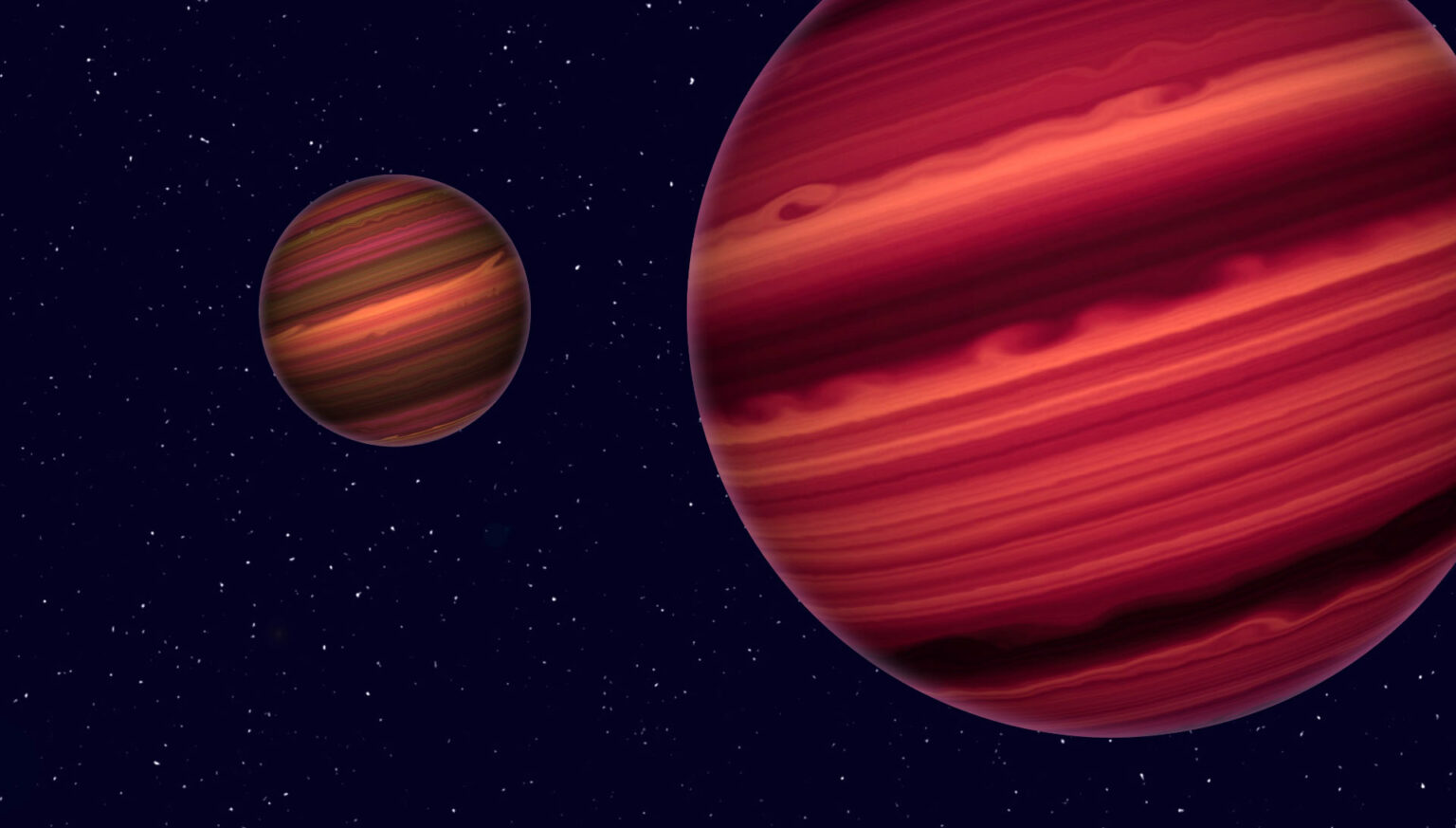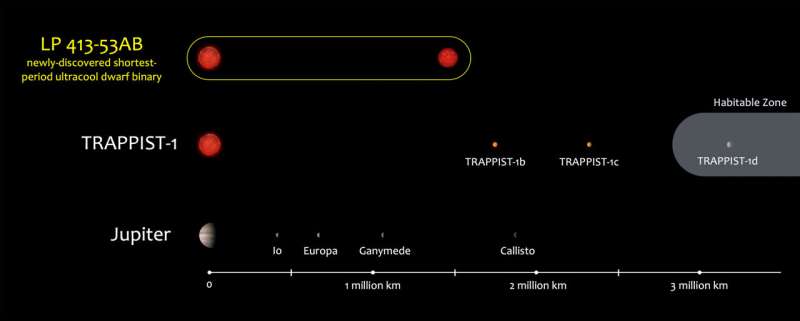Astronomers have found a pair of very cold dwarf stars. They orbit each other in just 20.5 hours. Scientists say that the age of this system is measured in billions of years.

The closest pair of dwarf stars
Astrophysicists from Northwestern University and the University of California, San Diego, reported the discovery of an interesting new pair of ultracool dwarfs. These are extremely dim stars that emit most of their energy in the infrared part of the spectrum. Therefore, people practically do not see them, but at the same time they are extremely common.
An interesting feature of the new system is that the stars in it orbit each other in a very short period of time – 20.5 hours. Until now, scientists have known only three such pairs of ultracool dwarfs. And in each case, these are young systems which age does not exceed 40 million years.
But the newly discovered system, designated LP 413-53AB, is much older. Its age is several billion years, which is comparable to our own Solar System. This means that it has gone a long evolutionary way.
Detection of a pair of ultracool dwarfs
The opening of the LP 413-53AB system began with working with archived data. Scientists were trying to develop an algorithm that would model a star based on its spectroscopic observations. One of the objects was precisely this system, which at first was believed to contain only one luminary.
However, the analysis of the spectrum has led researchers to believe that it may not be one dwarf, but a pair of them. This was clearly visible when the system components were moving in orbit. To test this theory, the scientists decided to send it to LP 413-53AB. A number of observations carried out in March, July, October and December 2022 confirmed the correctness of this assumption.

The distance between the components of the system is only 1 percent of the distance between the Earth and the Sun. And this creates some problems for understanding their evolution. After all, if the system was only 1 million years old, their diameters should be much larger and would actually overlap.
Scientists believe that this mystery could be solved in one of two ways. Ultracold dwarfs could have formed at a much greater distance from each other and become closer during the evolution of the system. Or there was also a third member of the system, which was later ejected, as a result of which the stars received a modern configuration.
According to phys.org
Follow us on Twitter to get the most interesting space news in time
https://twitter.com/ust_magazine
